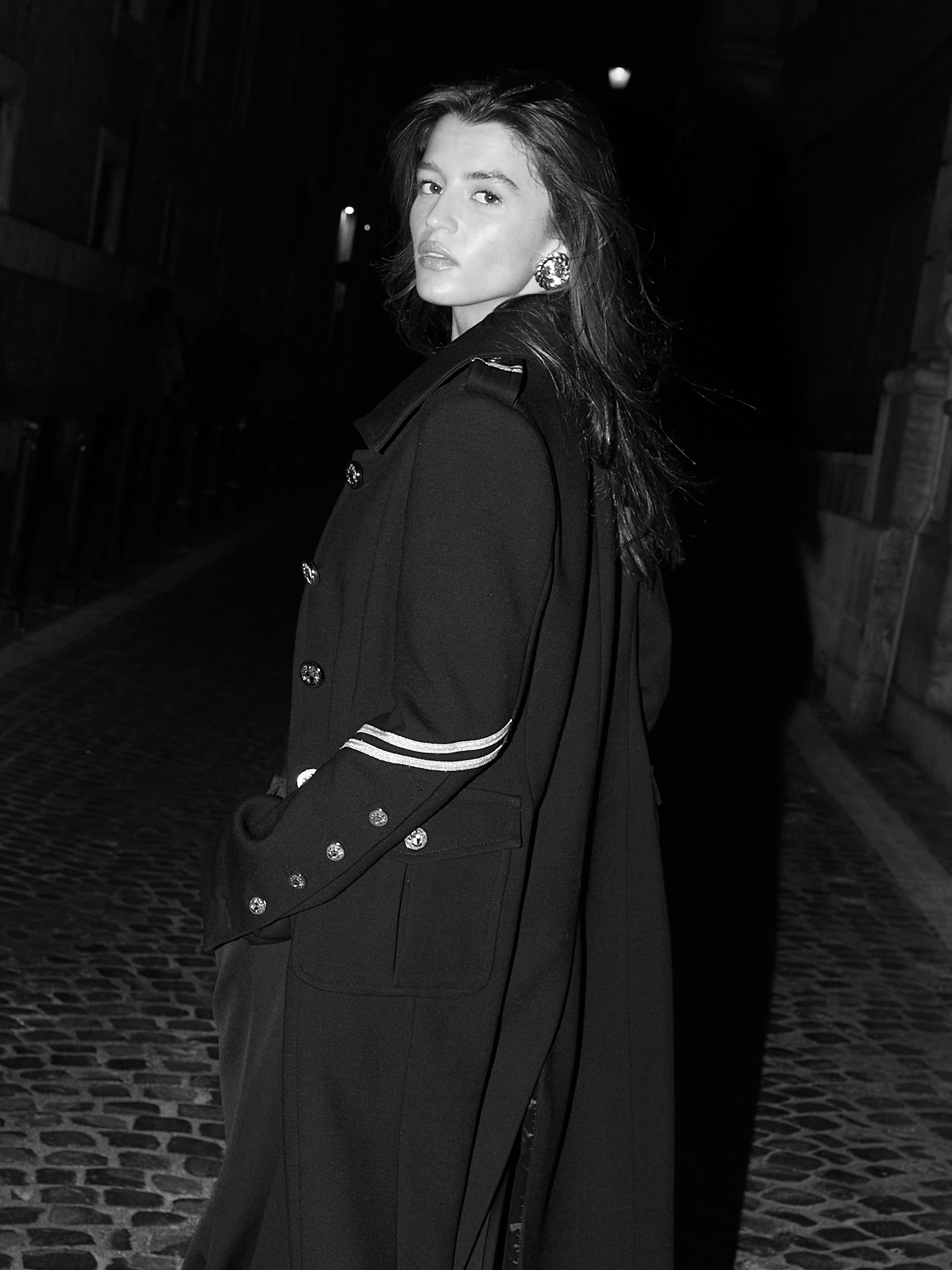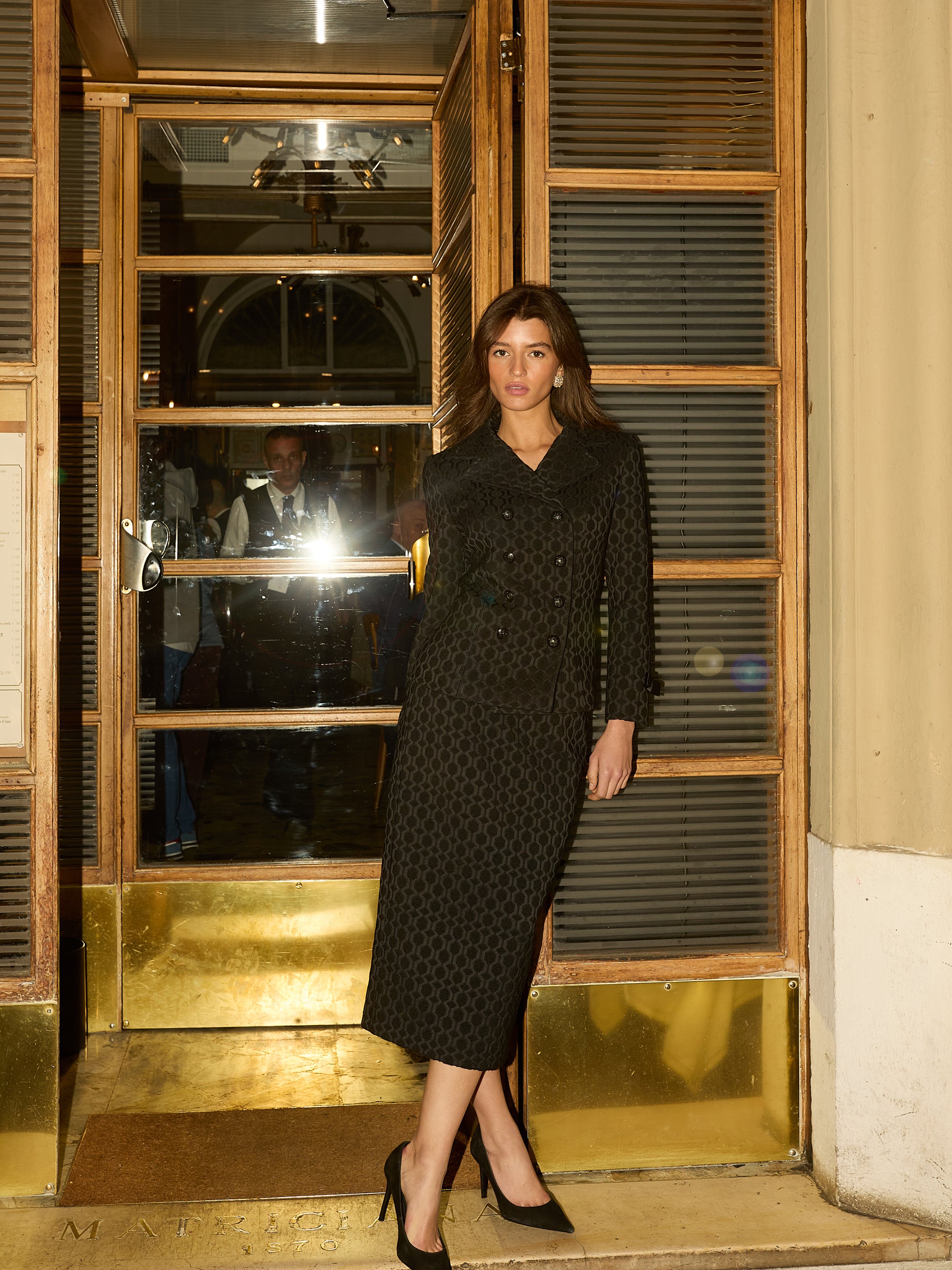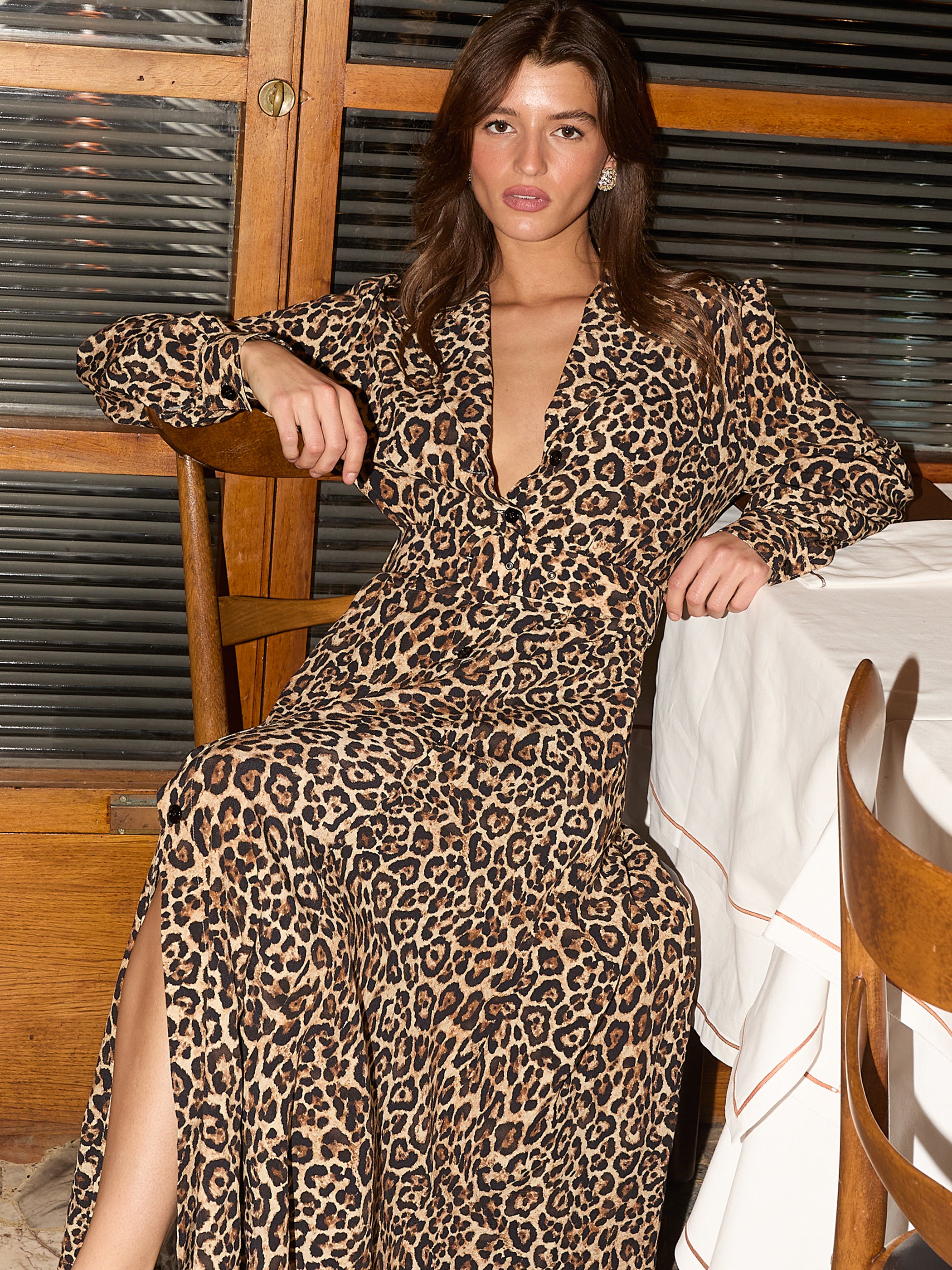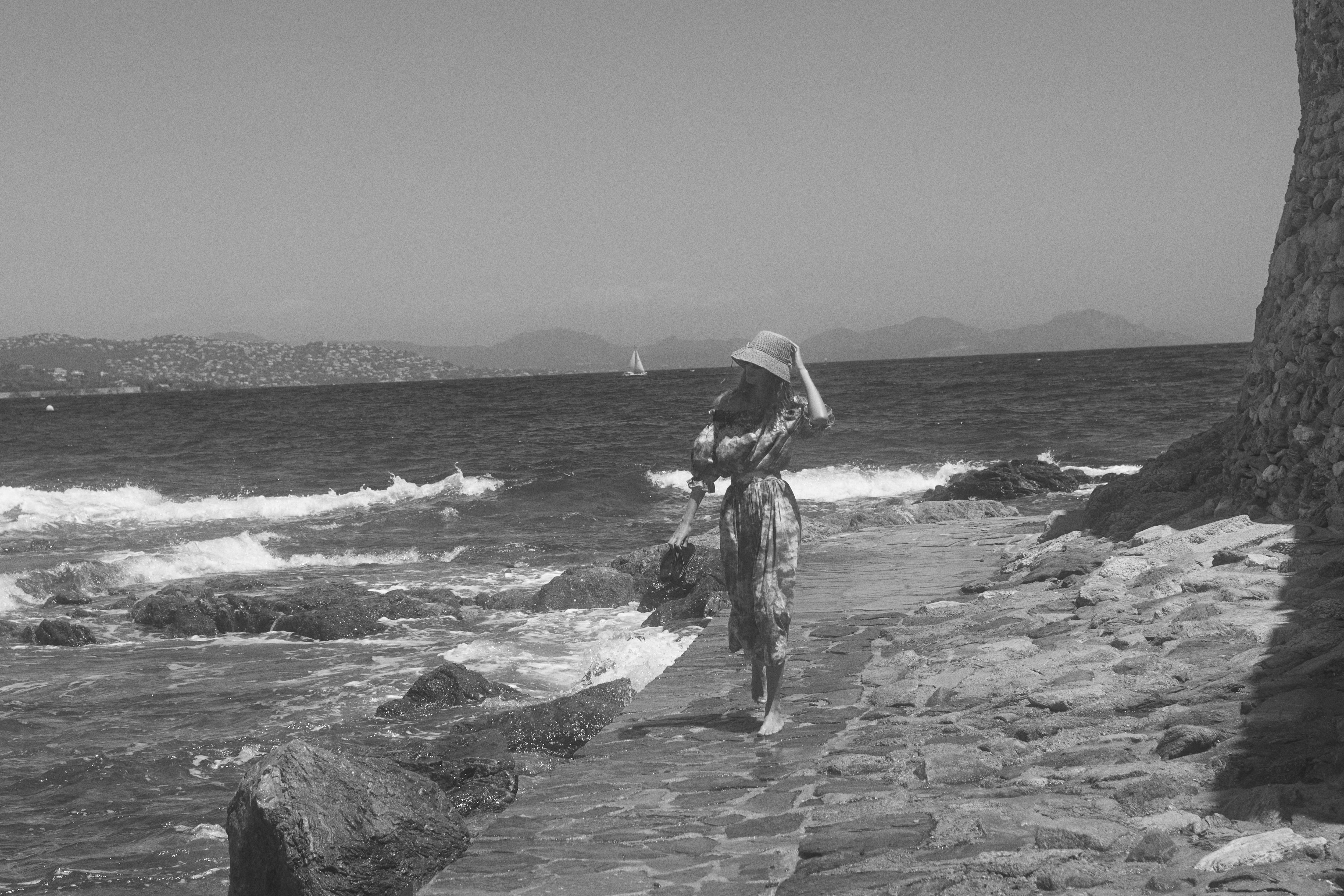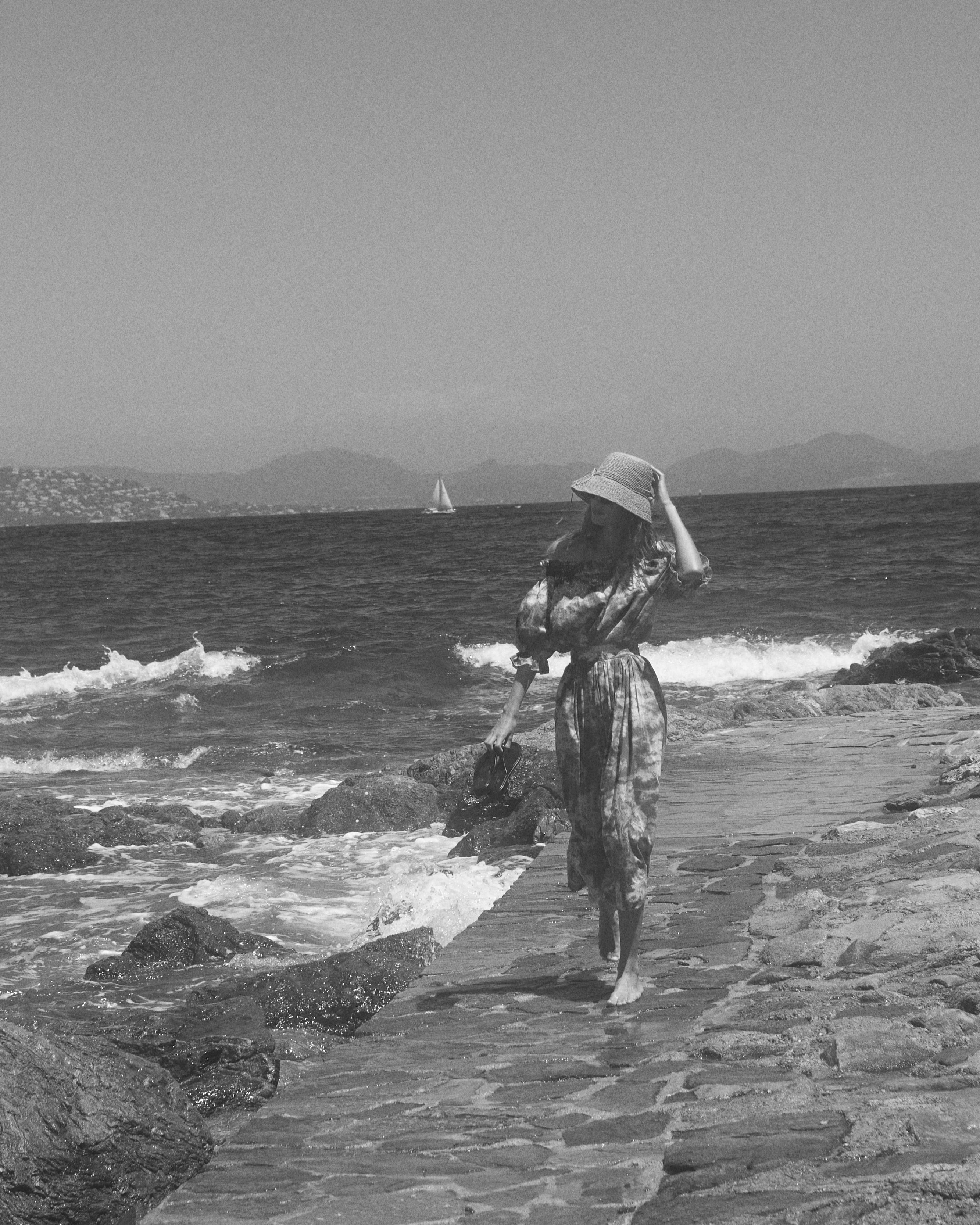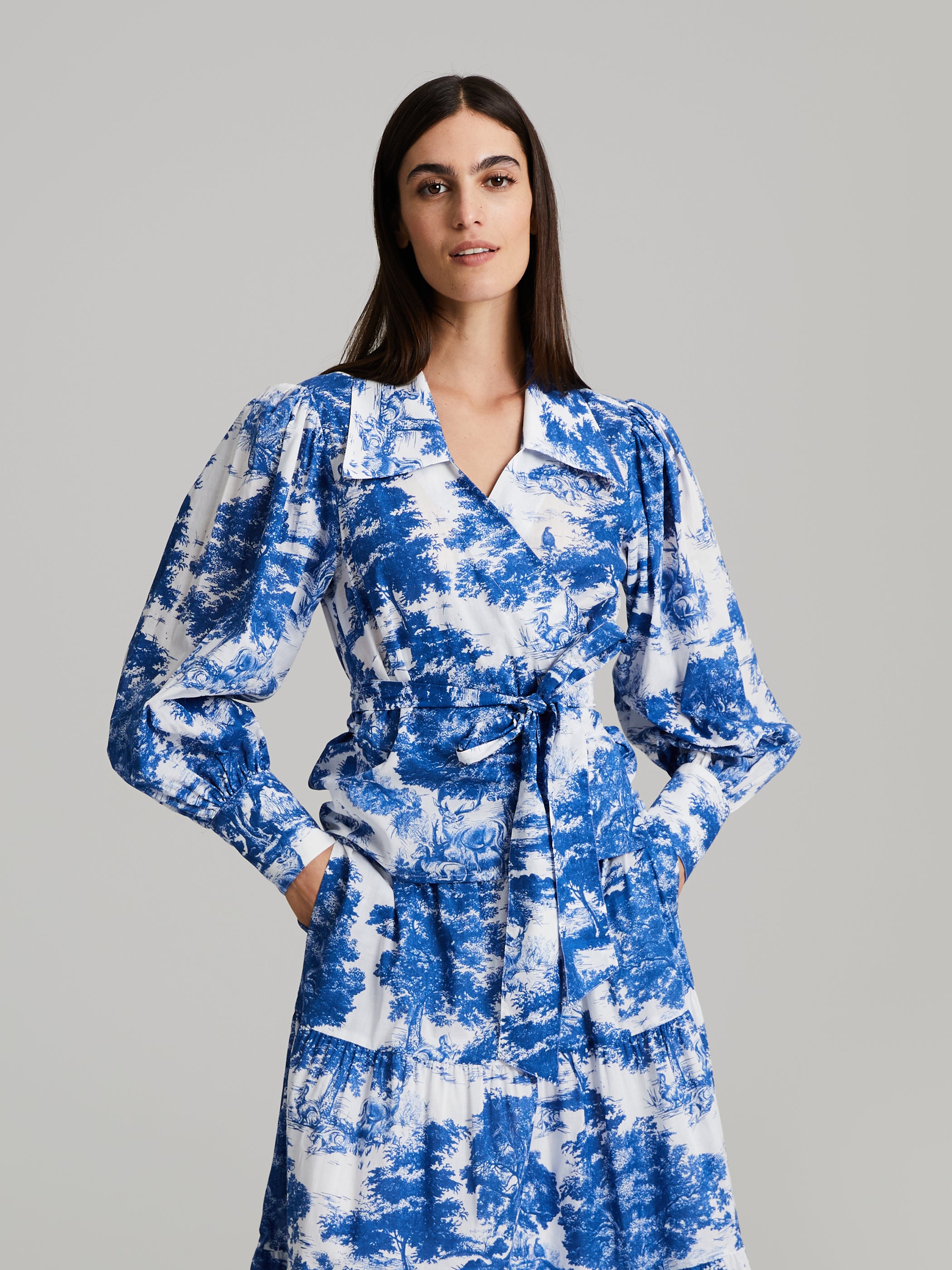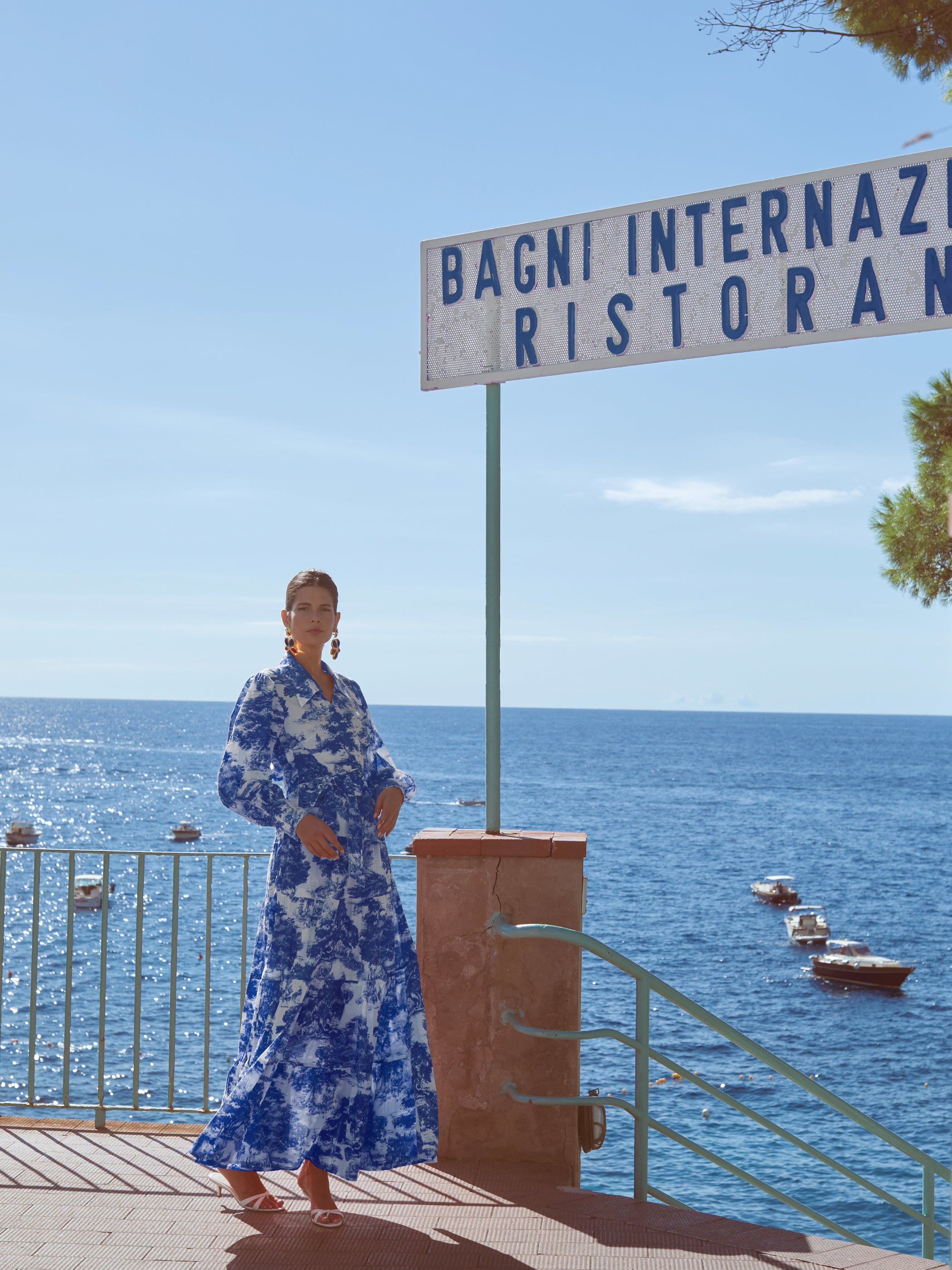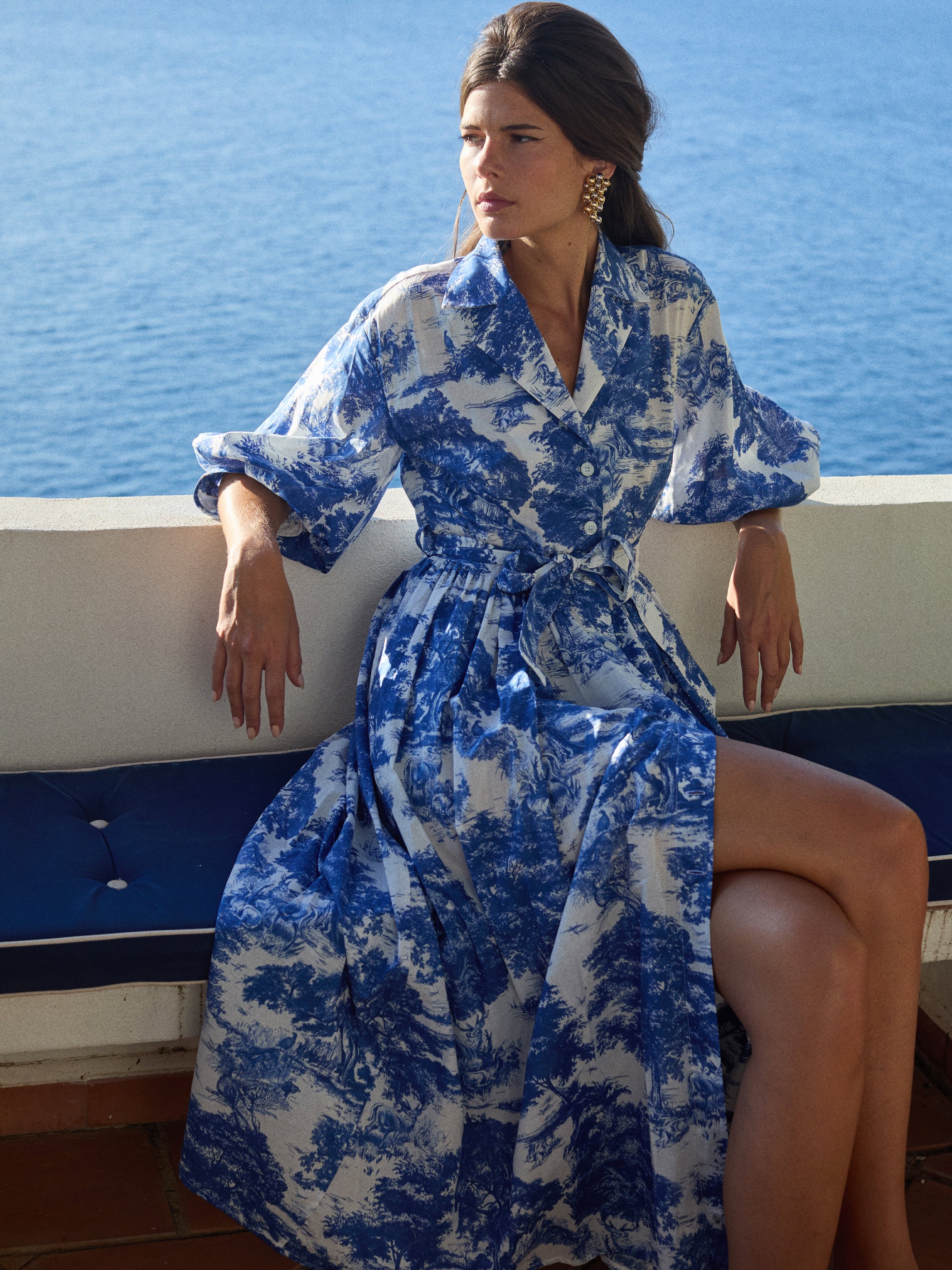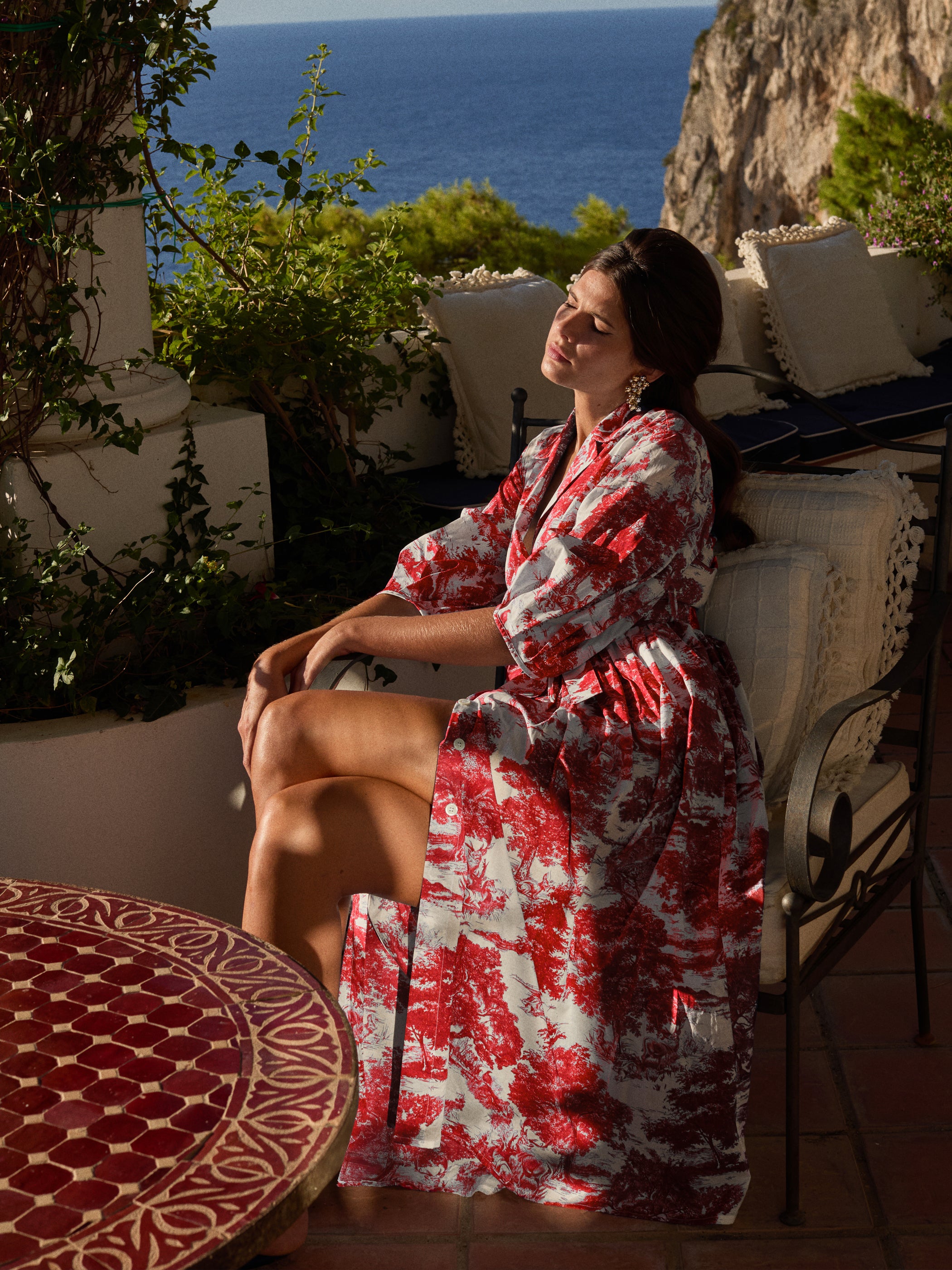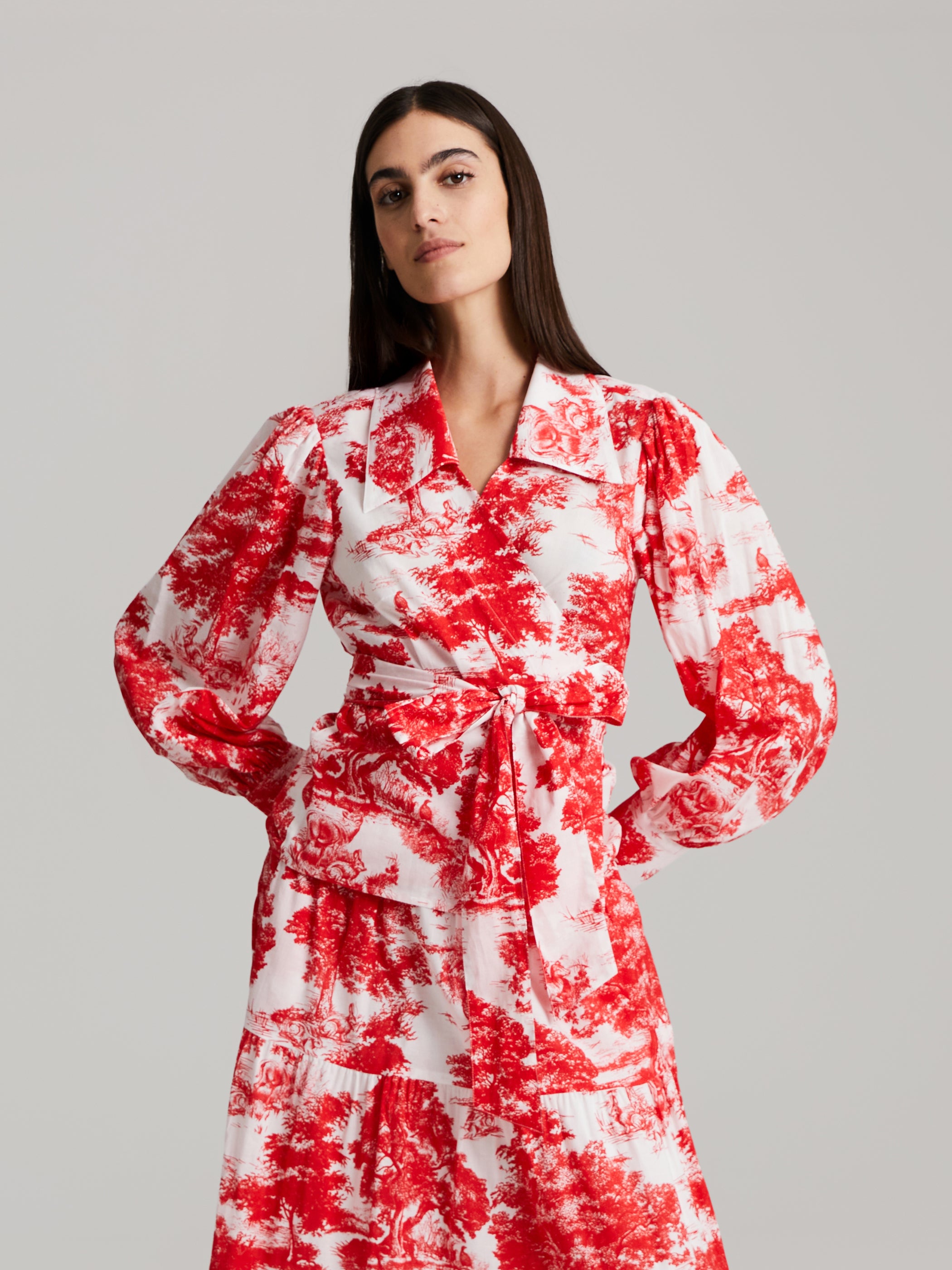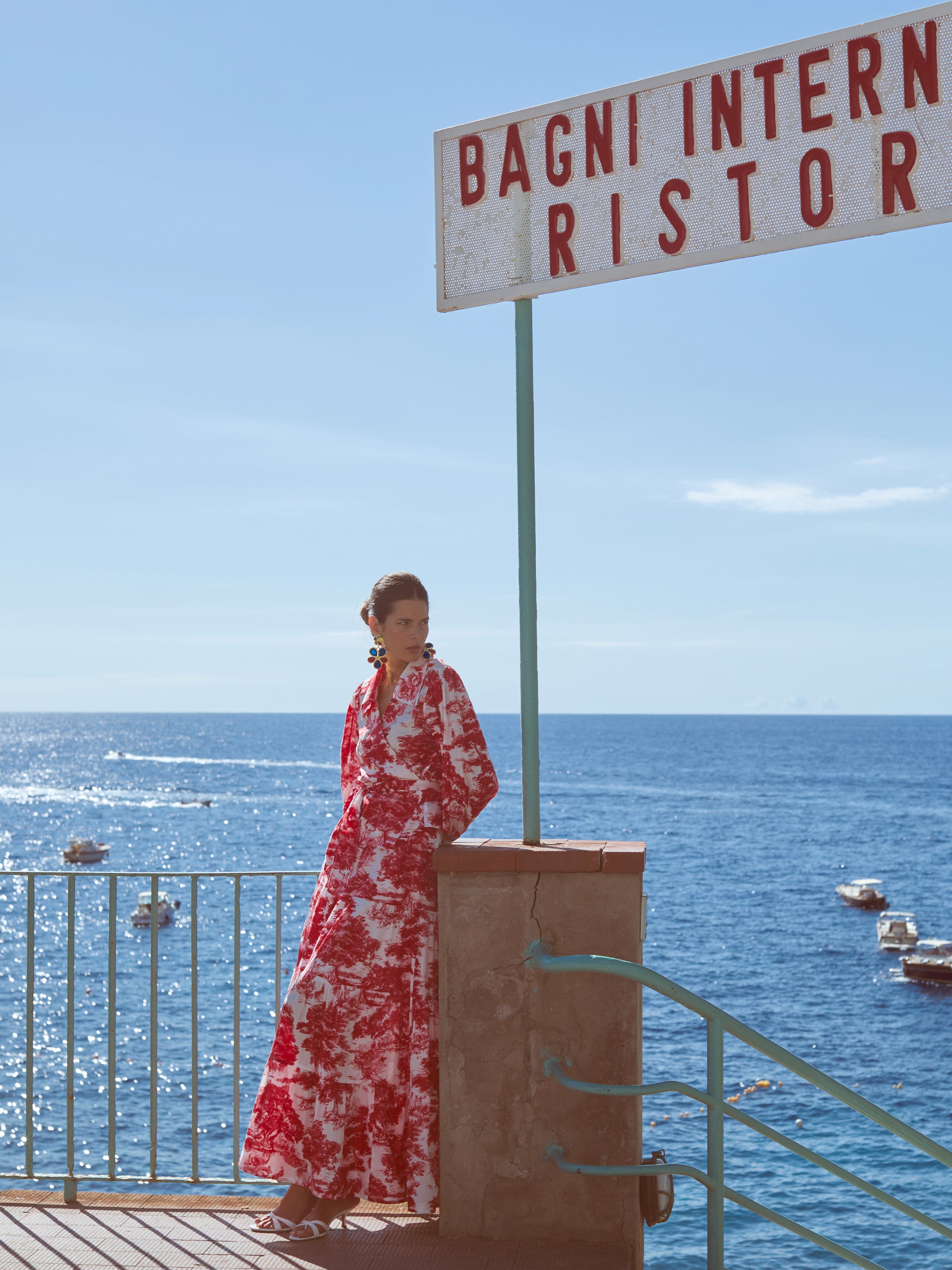Inspiration | 28th May 2024
Toile De Jouyn ajaton viehätys
Matka läpi historian ja muodin Toile de Jouy eli ”Jouyn kangas” sai alkunsa 1700-luvulla Versailles'n lähellä sijaitsevasta ranskalaisesta Jouy-en-Josas'n kaupungista. Tämä ikoninen kangas oli yrittäjän Christophe Oberkampfin keksintö. Hän perusti kaupunkiin tehtaan, jossa hän painoi idyllisiä maaseutu- ja paimentolaiselämää valkoiselle puuvillakankaalle.
Lue lisää:
Ensimmäiset painatukset
Ensimmäiset Toile de Jouyn painatukset tehtiin puumuottien avulla ja myöhemmin kuparirullilla. Yksivärisistä, sinisistä, vaaleanpunaisista, mustista tai vihreistä painatuksista tuli tyypillisiä tuotantoprosessin vuoksi, jossa jokainen väri vaati erillisen pesun. Oberkampfin alkuperäisiä malleja ei suojattu tekijänoikeuksilla, joten niistä tuli runsaasti inspiraatiota ja innovatiota muille painattajille Ranskassa, Englannissa ja Yhdysvalloissa.
Toile de Jouy Andiatalta
Nykyään Toile de Jouy on edelleen rakastettu kuvio, jota ylistetään sen eleganssin ja hienostuneisuuden vuoksi. ”Toile de Jouy on ajaton kuvio, joka korostaa eleganssia ja hienostuneisuutta”, sanoo Andiatan Matilda Morelius. ”Meidän versiomme kuvaa perinteistä ranskalaista elämää, luontoa ja eläimiä. Suunnittelimme kuvion muutama vuosi sitten, ja siitä on tullut klassikkomalli, jota käytämme jokaisessa mallistossamme.
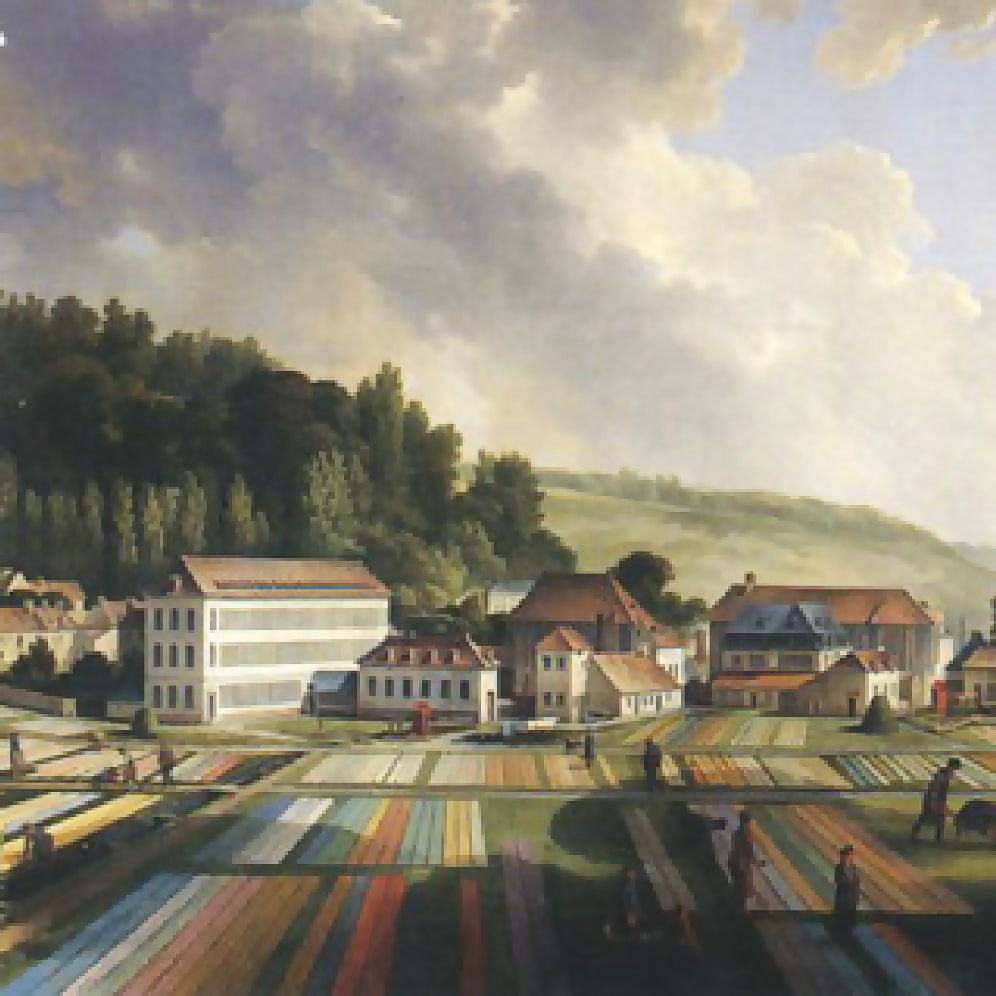
Toile de Jouyn alkuperä
Ranskan kuningas Louis XIV kielsi puuvillakankaiden valmistuksen ja tuonnin vuonna 1686 suojellakseen ranskalaista silkkiteollisuutta.
Näkemyksellinen Christophe Oberkampf perusti kangaspainotehtaan Sveitsin ja Ranskan rajalle ja aloitti kankaiden painamisen. Vasta kun puuvillan tuontikielto ja valmistuskielto purettiin vuonna 1759, hän siirsi liiketoimintansa Jouy-en-Josasiin.
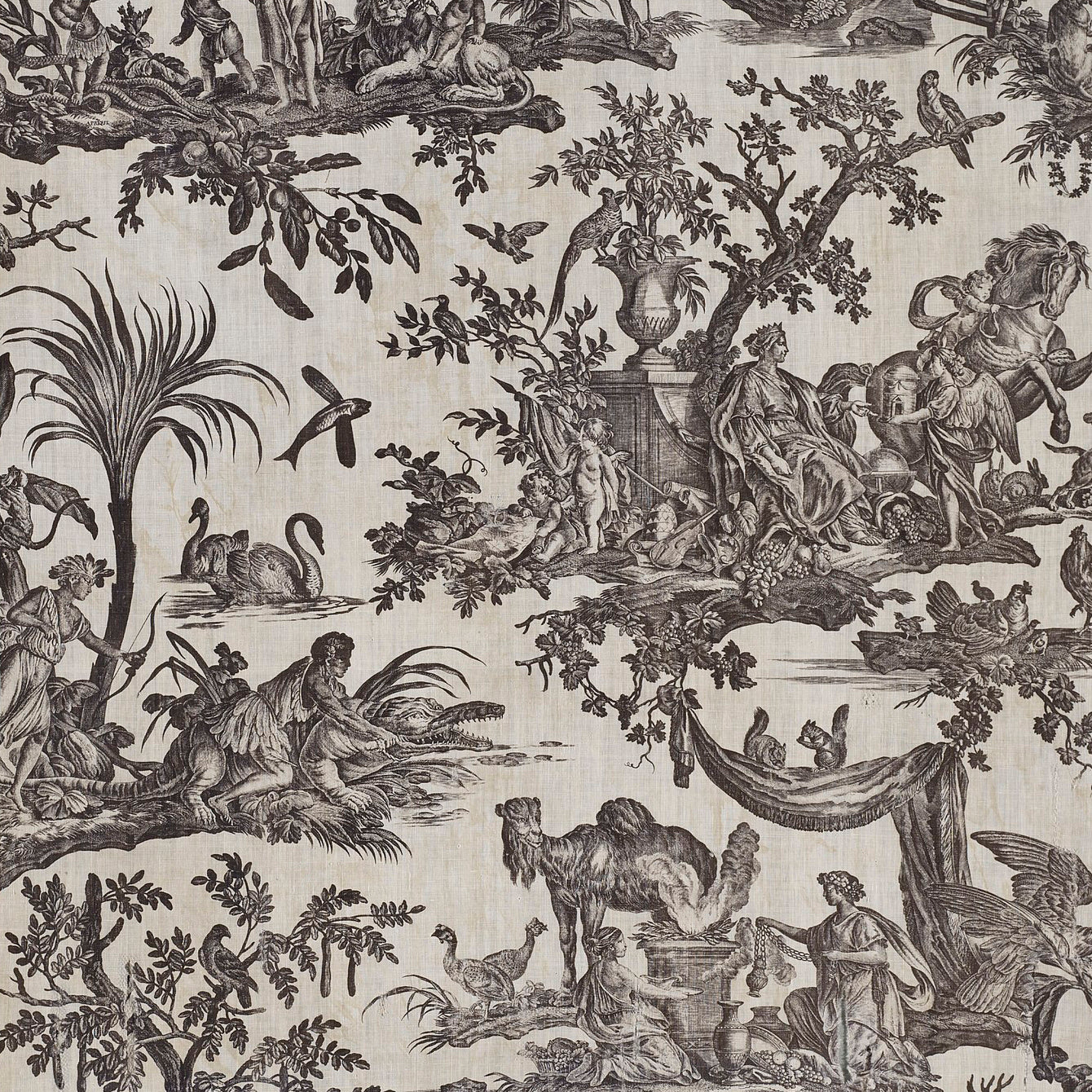
Toile de Jouy nousee suosioon
Kankaan suosio nousi nopeasti, osittain siksi, että Oberkampf teki strategisen päätöksen kuivattaa tekstiilit nurmikolla, missä ne kiinnittivät varakkaiden ostajien huomion. Hänen maineensa hyvänä työnantajana houkutteli alansa parhaita tekijöitä, mikä takasi painotuotteiden korkeimman laadun. Myös kuningatar Marie Antoinette ihastui Toile de Jouy -kankaaseen. Hän vieraili Oberkampfin tehtaalla useaan otteeseen ja toi mukanaan lapsensa katsomaan, miten kangas valmistettiin. Keisari Napoleon piti myös kankaasta, ja vuonna 1806 hän myönsi Oberkampfille kunnianarvoisan Ritarikunnan ansioistaan.

Toile de Jouyn paluu
Vaikka Toile de Jouyn suosio laski 1800-luvulla, se koki uuden nousun 1900-luvulla.
Tunnetut muotisuunnittelijat, kuten Christian Dior, Vivienne Westwood ja Jean-Paul Gaultier, elvyttivät kuosin ja ottivat sen osaksi mallistojaan.
Erityisesti Dior loi muotiluomuksia, kuten tyylikkäitä mekkoja, käyttäen ikonista linnan tapettikuosia.
Toile de Jouyn alkuperä
Ranskan kuningas Louis XIV kielsi puuvillakankaiden valmistuksen ja tuonnin vuonna 1686 suojellakseen ranskalaista silkkiteollisuutta.
Näkemyksellinen Christophe Oberkampf perusti kangaspainotehtaan Sveitsin ja Ranskan rajalle ja aloitti kankaiden painamisen. Vasta kun puuvillan tuontikielto ja valmistuskielto purettiin vuonna 1759, hän siirsi liiketoimintansa Jouy-en-Josasiin.
Toile de Jouy nousee suosioon
Kankaan suosio nousi nopeasti, osittain siksi, että Oberkampf teki strategisen päätöksen kuivattaa tekstiilit nurmikolla, missä ne kiinnittivät varakkaiden ostajien huomion. Hänen maineensa hyvänä työnantajana houkutteli alansa parhaita tekijöitä, mikä takasi painotuotteiden korkeimman laadun. Myös kuningatar Marie Antoinette ihastui Toile de Jouy -kankaaseen. Hän vieraili Oberkampfin tehtaalla useaan otteeseen ja toi mukanaan lapsensa katsomaan, miten kangas valmistettiin. Keisari Napoleon piti myös kankaasta, ja vuonna 1806 hän myönsi Oberkampfille kunnianarvoisan Ritarikunnan ansioistaan.
Toile de Jouyn paluu
Vaikka Toile de Jouyn suosio laski 1800-luvulla, se koki uuden nousun 1900-luvulla.
Tunnetut muotisuunnittelijat, kuten Christian Dior, Vivienne Westwood ja Jean-Paul Gaultier, elvyttivät kuosin ja ottivat sen osaksi mallistojaan.
Erityisesti Dior loi muotiluomuksia, kuten tyylikkäitä mekkoja, käyttäen ikonista linnan tapettikuosia.



